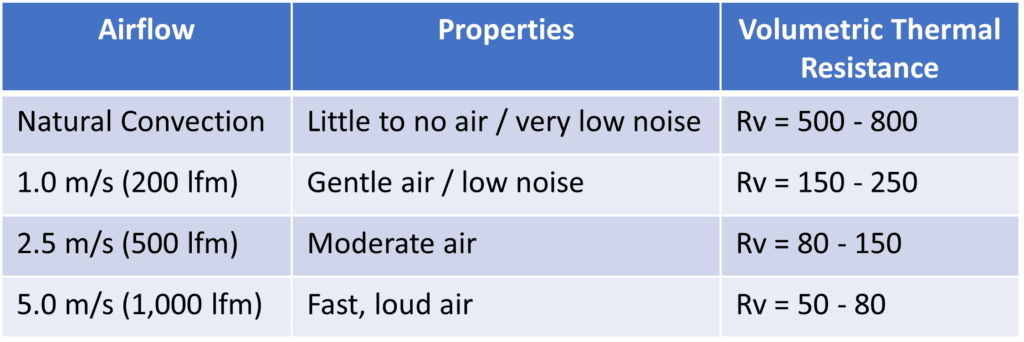This heat sink size guide helps engineers estimate the required heat sink volume using key inputs: power dissipation, airflow, and allowable temperature rise. By applying a straightforward calculation method, designers can make informed early-stage decisions for effective thermal management.
Quickly Estimating Required Heat Sink Volume
To quickly estimate the required heat sink volume, engineers can use a simple equation based on volumetric thermal resistance:
V = (Q × Rv) / Required ΔT
Where:
- V = Heat Sink Volume
- Q = Power (in watts)
- Rv = Volumetric thermal resistance (refer to the table below)
- Required ΔT = Maximum allowable temperature rise (thermal budget)

The table below provides volumetric thermal resistance (Rv) values for different airflow levels. These values are essential for accurately estimating the heat sink volume.
While this equation offers a volume estimate, it doesn’t account for factors like material selection, fin spacing, or thermal interface materials (TIM). However, it’s proven to be a valuable starting point for directional analysis.
Here are the links to an online calculator and a usage guide that gives you a few needed tips.




